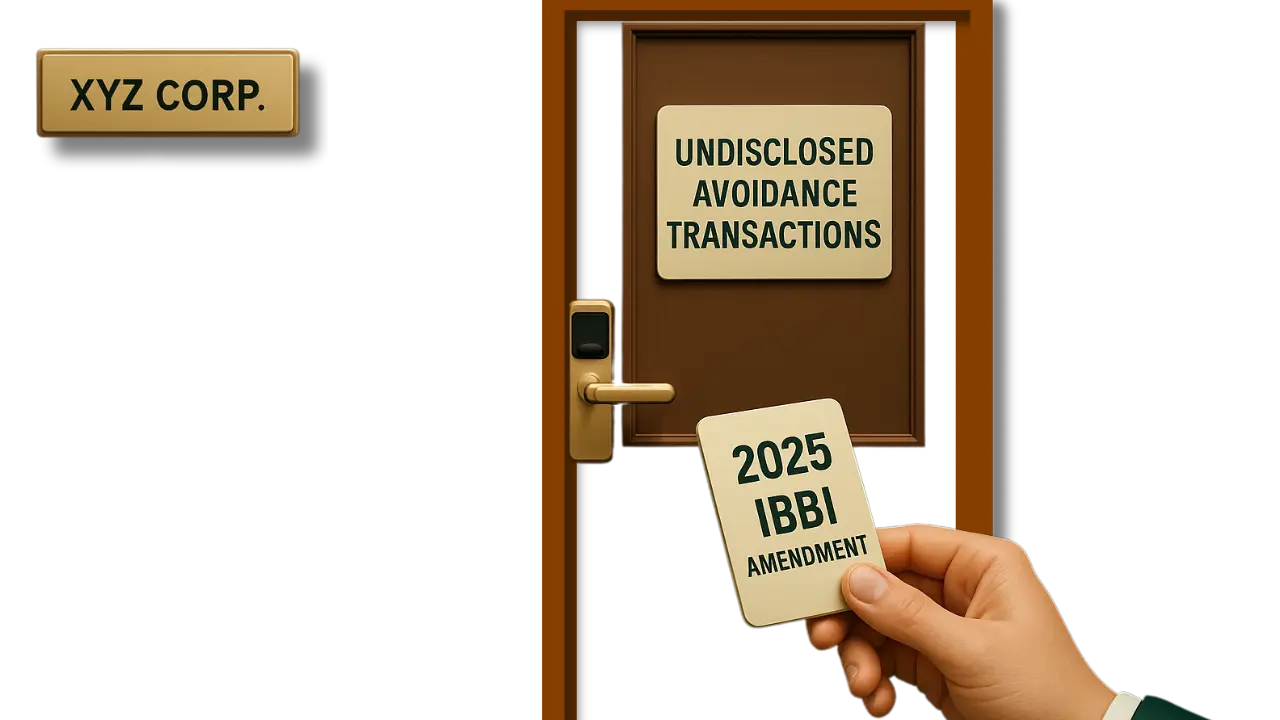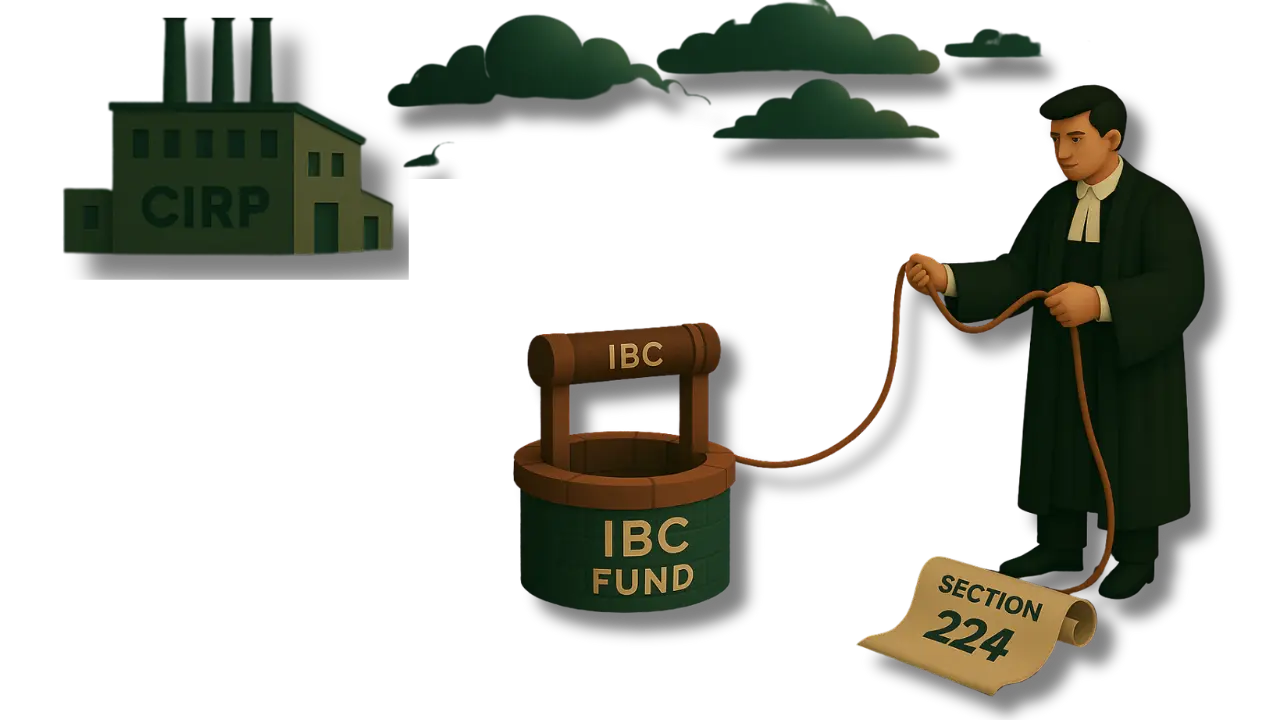The Insolvency and Bankruptcy Code, 2016, has consistently evolved to address practical challenges and strengthen its objectives of value maximisation and timely resolution. A critical facet of this evolution lies in the treatment of “avoidance transactions,” which are pre-insolvency dealings designed to unfairly benefit certain parties at the expense of the corporate debtor’s overall financial health and, consequently, its creditors. The latest amendment to the IBBI (Insolvency Resolution Process for Corporate Persons) Regulations, 2016, specifically concerning the disclosure of avoidance transactions in the Information Memorandum (IM), marks a significant step towards greater transparency and improved creditor outcomes.
Understanding Avoidance Transactions under IBC: The PUFE Framework
Avoidance transactions, often referred to as “PUFE transactions,” are a set of dealings that the Resolution Professional (RP) or Liquidator can seek to annul or reverse before the Adjudicating Authority. These are enshrined in Chapters III and VI of the IBC and include:
- Preferential Transactions (Section 43): These occur when the corporate debtor, during a “look-back period” (two years for related parties, one year for others), transfers property or provides a benefit to a creditor, surety, or guarantor, putting them in a more advantageous position than they would have been in the event of liquidation.
- Undervalued Transactions (Section 45): These involve the corporate debtor making a gift or transferring assets for a consideration significantly less than their true market value.
- Extortionate Credit Transactions (Section 50): This refers to transactions where the corporate debtor is subjected to credit terms requiring exorbitant payments, which are unconscionable under ordinary contract principles.
- Fraudulent Transactions and Wrongful Trading (Section 66): These deal with business conduct carried out with the intent to defraud creditors or for any fraudulent purpose. Section 66(2) specifically addresses wrongful trading, where directors continue business operations knowing that insolvency is inevitable, without a reasonable prospect of avoiding it.
The underlying rationale for these provisions is to prevent the dissipation of the corporate debtor’s assets just before or during the insolvency process, ensuring that the asset pool available for distribution to all creditors is maximised and that no one gains an unfair advantage.
Evolution of Avoidance Provisions and Key Cases
The journey of avoidance transactions under IBC has been shaped significantly by judicial pronouncements. In Jaypee Infratech Ltd. Interim Professional v Axis Bank Ltd1 the Supreme Court clarified the “ordinary course of business” defense under Section 43, stating that it applies only if both the corporate debtor and the transferee conducted the transaction in their ordinary course of business. It also emphasized that transactions made without consideration or counter-guarantee, especially when the corporate debtor was in financial distress, could be deemed preferential or undervalued.
In Sahara India v. Shir Nandkisho Vishnupant Deshpande and Anr2, the NCLAT dealt with the question of whether the adjudicating authority can classify any transaction as preferential on its own without Resolution Professional applying for the same. It held that the tribunal doesn’t have the power to classify any transaction as preferential on its own, since the responsibility is on Resolution Professional to do that and apply to the adjudicating authority for its avoidance.
Further, in Tata Steel BSL Ltd. v. Venus Recruiter Private Ltd. & Ors.3, the Delhi High Court clarified that avoidance applications can indeed survive the conclusion of the CIRP, and the RP is not rendered functus officio regarding these applications, as their benefit is intended for the creditors.
In Piramal Capital and Housing Finance Limited v. 63 Moons Technologies Limited & Others4, delivered on April 1, 2025 the Supreme Court held that NCLAT overstepped its jurisdiction by interfering with a resolution plan clause that allowed the successful resolution applicant to appropriate recoveries from Section 66 (fraudulent or wrongful trading) applications. It distinguished between “avoidance” transactions (Sections 43, 45, 50), which aim to set aside specific transactions and reclaim assets, and fraudulent/wrongful trading (Section 66), which deals with the overall conduct and potential personal liability of directors. The Court emphasised that recoveries from Section 66 applications are not necessarily “avoidance transactions” in the same vein and that the CoC’s commercial wisdom in deciding the treatment of such recoveries in the resolution plan should generally be respected. This ruling has significant implications for how resolution applicants value the corporate debtor and how potential recoveries from such transactions are factored into bids.
Role and Implications of the Latest Amendment
IBBI has recently notified amendments to the IBBI (Insolvency Resolution Process for Corporate Persons) Regulations, 2016, which came into force on July 4, 20255. This amendment significantly strengthens the disclosure requirements related to avoidance transactions in the Information Memorandum (IM).
- Mandatory Disclosure in IM: Previously, there was no explicit, comprehensive mandate for disclosing identified avoidance transactions in the IM. The amendment now makes it mandatory for the Resolution Professional to include “details of all identified avoidance transactions, if any, under Chapter III or fraudulent or wrongful trading under Chapter VI of Part II of the Code and subsequent filings before the Adjudicating Authority” in the IM and its subsequent updates.
- Periodic Updates to IM: The amendment ensures that the IM is regularly updated and shared with the Committee of Creditors (CoC) and prospective resolution applicants, keeping them consistently apprised of any additional avoidance transactions or developments.
- Transparency and Information Symmetry: This is a crucial step towards fostering greater transparency and reducing information asymmetry. Prospective resolution applicants will now have access to complete information about identified avoidance transactions before submitting their plans, enabling them to objectively assess the corporate debtor’s true asset value and liabilities. This can lead to more realistic and robust bids.
- Preventing Undisclosed Assignment: The amendment introduces a new sub-regulation (2A) in Regulation 38, explicitly stating that avoidance transactions under Chapter III or fraudulent or wrongful trading under Chapter VI of Part II of the Code cannot be assigned under a resolution plan if they were not disclosed in the information memorandum and not intimated to all prospective resolution applicants before the last date for submission of resolution plans. This provision aims to prevent hidden liabilities or undisclosed assets from being transferred to the successful resolution applicant, ensuring fairness and integrity in the process.
- Deterrence against Unscrupulous Promoters: By mandating upfront disclosure and restricting undisclosed assignments, the amendment serves as a strong deterrent against promoters engaging in fraudulent diversion of funds or asset stripping prior to insolvency. It ensures that such transactions cannot be “brushed under the carpet” and will be actively addressed.
- Improved Value Realisation for Creditors: With clear information about potential clawbacks from avoidance transactions, creditors can have more realistic expectations regarding recoveries. The ability of resolution applicants to factor in the value of these potential recoveries into their bids could lead to higher resolution amounts and better value realisation for creditors.
Conclusion
The latest amendment regarding the disclosure of avoidance transactions in the Information Memorandum represents a vital enhancement to the IBC framework. It reinforces IBC’s core principles of transparency, fairness, and value maximisation. By shedding light on pre-insolvency misdealings and ensuring their upfront consideration in the resolution process, this amendment empowers stakeholders with better information, deters fraudulent practices, and ultimately strengthens the efficacy of the IBC in resolving corporate distress. As the IBC continues to evolve, such targeted amendments are crucial in making the insolvency regime more robust, predictable, and conducive to a healthier credit environment in India. The interplay of legislative amendments and judicial interpretations will continue to shape the landscape of avoidance transactions, ensuring that the spirit of IBC – maximising value for all stakeholders – remains paramount.
Citations
- Jaypee Infratech Ltd. Interim Resolution Professional v. Axis Bank Ltd. (2020) 8 SCC 401)
- Sahara India v. Shir Nandkisho Vishnupant Deshpande and Anr (Company Appeal (AT) (Ins)No. 368 of 2021)
- Tata Steel BSL Ltd. v. Venus Recruiter Private Ltd. & Ors (2023/DHC/000257)
- Piramal Capital and Housing Finance Limited v. 63 Moons Technologies Limited & Others (Civil Appeal Nos. 1632-1634 of 2022)
- Insolvency and Bankruptcy Board of India (Insolvency Resolution Process for Corporate Persons) (Fifth Amendment) Regulations, 2025. Available at: https://ibbi.gov.in/uploads/legalframwork/c6396cff47bd23b1 b6a5445da6e905cc.pdf
Expositor(s): Adv. Khushboo Saraf






